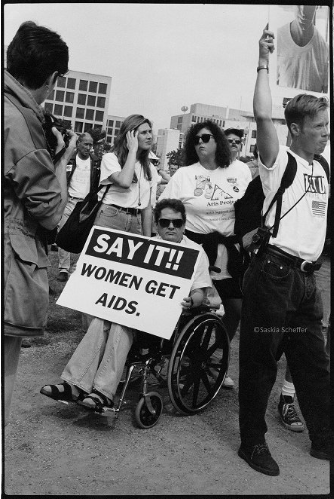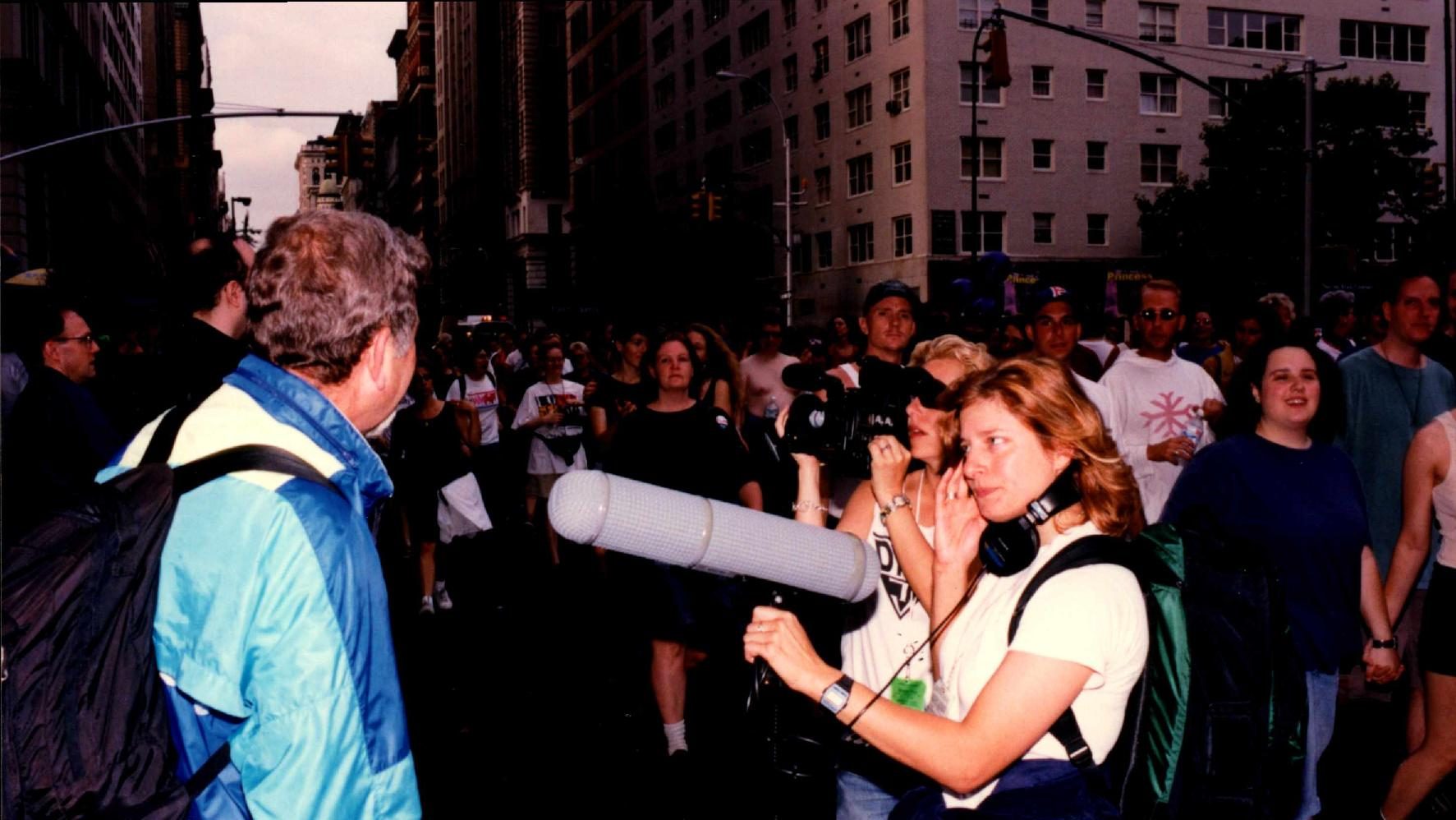
In the Lesbian Health segment, Dyke TV combatted popular myths that women and lesbians are not at risk for HIV. Though AIDS disproportionately impacted the gay male community in the 80s and 90s — as of 1996, some 44% of prevalent AIDS cases occurred in men who had sex with men2 — lesbians were also at increased risk of HIV.
A combination of ignorance, shame, and lack of resources prevented lesbians from getting much needed help. Though woman-to-woman sexual transmission cases of HIV are rare, government sources for information, including the CDC, did not acknowledge that there was any risk of sexual transmission for women who partner with women. In addition, higher rates of IV drug use among lesbians, financial barriers to healthcare, and fears of discrimination in the medical system dissuaded lesbians from seeking support.
In the 4-part documentary “risk,” for which Dyke TV received a grant from the city of New York Department of Health, HIV/AIDS-positive lesbians and activists raise awareness of the need to address AIDS in the lesbian community.3
Though lesbians were heavily involved with AIDS activism in the 80s and 90s, many members of the community were unwilling to confront the realities of IV drug use in the lesbian community or the racial inequality of AIDS infections, as women of color, particularly Black women, were disproportionately impacted by AIDS. In clips like this one, Dyke TV lays bear these inequities and biases, raising awareness of the tremendous work that remains to be done to support lesbians with AIDS. By working with members of the Minority AIDS Task Force, The Lesbian AIDS Project, and other community health organizations, Dyke TV’s work played a crucial role in AIDS education and fighting stigma against lesbian drug users and HIV-positive lesbians.
Footnotes:
- “Say it!! Women Get AIDS,” 1992, Lesbian Herstory Archives Photo Files, Saskia Scheffer Folder, Lesbian Herstory Archives, New York, New York, http://dcmny.org/islandora/object/lesbianherstory%3A1297. ↩
- “Update: Trends in AIDS Incidence, Deaths, and Prevalence,” CDC.org, Feb. 28, 1997, https://www.cdc.gov/mmwr/preview/mmwrhtml/00046531.htm. ↩
- Dyke TV, Episode 94, 1995, Dyke TV Records, Sophia Smith Collection, Northampton, Massachusetts. ↩
